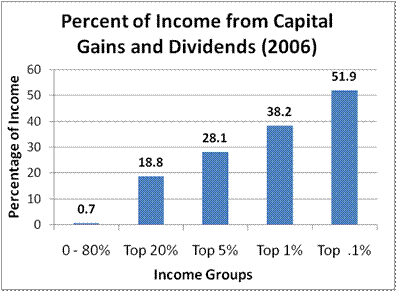Dividends are the portion of corporate profits paid out to shareholders. When a corporation earns a profit or surplus, that money can be put to two uses: it can either be re-invested in the business (called retained earnings), or it can be distributed to shareholders as dividends.
There are two ways to distribute cash to shareholders: share repurchases (reported as treasury stock in the owner's equity section of the balance sheet) or dividends.
Many corporations retain a portion of their earnings and pay out the remaining earnings as a dividend. A dividend is allocated as a fixed amount per share. Therefore, a shareholder receives a dividend in proportion to the shares he owns -- for example, if shareholder Y owns 100 shares when company Z declares a dividend of USD 1.00 per share. then shareholder Y will receive a dividend of USD 100 for his shares.

Dividends are considered a form of passive income for investors.
Companies that declare dividends must record a liability for the amount of the dividends that will be paid to investors.
For the company, a dividend payment is not an expense, but the division of after tax profits among shareholders. On the dividend declaration date, a company's board of directors announces its intention to pay a dividend to shareholders on record as of a certain date (date of record). The per share dividend amount is multiplied by the number of shares outstanding and this result is debited to retained earnings and credited to dividends payable.
Dividends payable is recorded as a current liability on the company's books; the journal entry confirms that the dividend payment is now owed to the stockholders. On the declaration date, the Board announces the date of record and a payment date; the payment date is the date when the funds are sent to the shareholders and the dividends payable account is reduced for the payment amount.